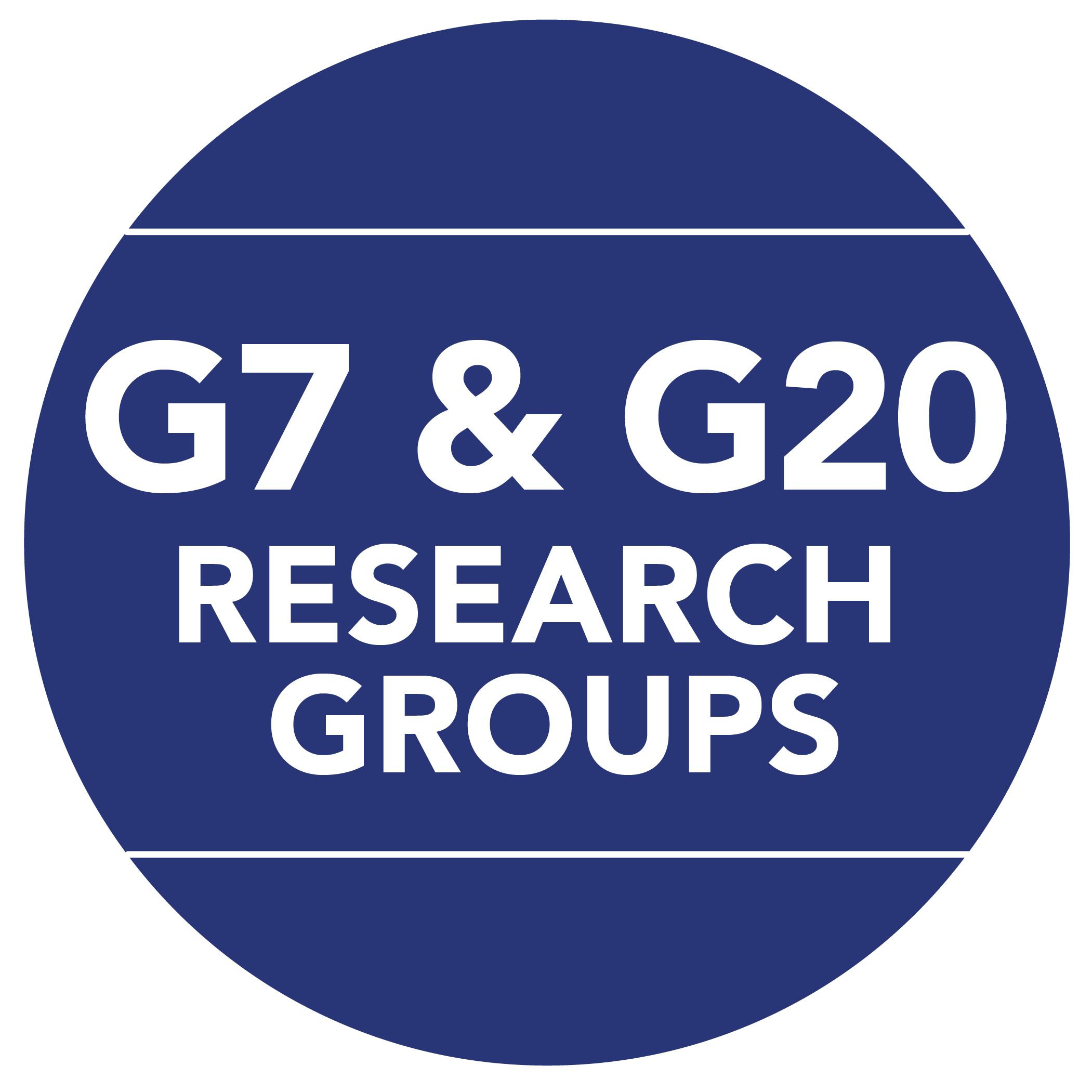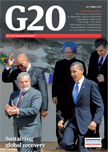

 |
 |
|

Achieving Interdependence
Haruhiko Kuroda, president, Asian Development Bank
To download a low-resolution pdf, click here. (Be patient! It's 7.7 MB.)
Socially inclusive and environmentally sustainable growth in Asia is key to achieving global economic growth.
What happens in Asia and the Pacific is fundamentally important to G20 countries for two quite different – but related – reasons. First, the Asia Pacific region is still the centre of gravity of world poverty, with 903 million people living below the poverty threshold of $1.25 a day set in 2005, a number greater than the population of all the G8 countries and Australia combined. This pervasive poverty made the region highly vulnerable to the 2007/08 food crisis, with more than half of the additional 100 million people who became chronically hungry in 2008 coming from Asia. Poverty indicators relating to nutrition and maternal and child health are especially problematic in this region. Just over one quarter of children in developing countries globally are underweight, but in South Asia the prevalence is 46 per cent. Despite being the fastest-growing region in the world economically, it accounts for nearly 34 per cent of global deaths of children under five, more than 40 per cent of maternal deaths and 60 per cent of newborn deaths. Of the 450 newborn babies who die every hour around the world, more than half of them are in only six Asian countries – Afghanistan, Bangladesh, China, India, Indonesia and Pakistan. Even before the current global economic slowdown, the Millennium Development Goals (MDGs) were at risk of not being met. They simply cannot be achieved without much faster, deeper and broader progress in Asia and the Pacific.
Second, and paradoxically, the world now increasingly depends upon a dynamic Asia to help restore the pace and pattern of economic growth, not just in the region but globally as well. Asia is indeed suffering from the current global recession. However, its sound and prudent banking policies, sustainable debt management, competitive and productive industries, and high savings and investment can be sources of durable economic growth. Provided international markets and capital remain open and fair, and with good public and private investment, Asia can be a source of renewed global economic growth.
Asia can also affect the quality of that future economic growth. As developing Asia grows, its share of global carbon emissions could rise above 40 per cent by 2030. This would make the region the main driver of global climate change. Aside from investing in environmentally sustainable solutions, Asia can also promote social protection schemes to address health, livelihood and climate-related vulnerabilities, develop infrastructure in disadvantaged areas and promote energy efficiency that will increase the incomes of the poor. A socially inclusive and environmentally based growth path for Asia is not only the right thing to do; it is also the smart thing to do.
The current economic slowdown continues to exacerbate the problems of poverty, inequity and poor health. Rising unemployment has forced vulnerable sectors of society to switch to much cheaper and less nutritious types of food, making the poor, particularly pregnant women, even more vulnerable to ill health.
A study by the Asian Development Bank (ADB) estimates that unless measures are taken to tackle climate change, rice prices will be 20 per cent higher in 2050 compared to the case for no climate change. Wheat prices will increase by 16 per cent. Maize prices will shoot up by 52 per cent. According to recent work by the Food and Agriculture Organization (FAO) using longer-term population and income projections, global food production will need to increase by more than 40 per cent by 2030 and 70 per cent by 2050 to meet increasing demand.
In the health sector, Asia also has particular challenges that undermine incomes, productivity and equity at the household and national levels. Public expenditure on health is lower than in any other region in the world. At around $11 per person per year, it is clearly inadequate for essential care. Much healthcare expenditure is also inequitable and a cause of poverty simply because it is ‘out of pocket’: ADB studies found that almost 40 million people in India alone fell below the poverty line simply because of such essential health payments. Much of this expenditure is also inefficient, either allocated to the urban elite by governments or spent by the poor on services provided by unqualified practitioners in the unregulated private sector.
If the recent global economic crisis has shown anything, it is the need to respect and work with, not against, the power of markets. Yet one cannot simply leave markets to run unregulated or on auto pilot. A balance is needed to achieve socially inclusive and environmentally sustainable economic growth that also reduces poverty.
In response to the above imperatives, ADB is making significant efforts to ensure long-term food security and improve overall health in the region by encouraging private sector participation, knowledge management and regional cooperation in accordance with its long-term strategy.
As a short-term response to the 2007/08 food crisis, ADB provided targeted interventions to protect the food entitlements of the most vulnerable groups and budget support to the hardest-hit countries to alleviate fiscal pressures and reduce distortions in food pricing and access to health services.
In the medium term, ADB’s food and health security assistance will focus on rural infrastructure, sustainable land and water management, and adaptation and mitigation measures to make agriculture more resilient to climate change. Regional cooperation for food trade facilitation and cross-border health-related risks, improved national and regional safe food-supply chain networks, and enhanced agriculture research and development will also be key components of ADB’s strategy.
Leaders of the G20 countries, of which six – Australia, China, India, Indonesia, Japan, Korea – are located in the Asia Pacific region, can be particularly helpful by supporting and sustaining national public investment in food security, basic health and health systems. This will make major inroads to achieving the MDGs, including the three directly related to health, nutrition and food accessibility and thus indirectly affecting all the other goals. Supporting Asia’s food security and health systems is also in the direct national interest of the G20 countries themselves: all of them and the world benefit by reducing incidence of infectious diseases such as pandemic influenza, multi-drug-resistant tuberculosis, HIV/AIDS and vulnerabilities of the poor to both economic and natural shocks that may induce regional social instability.
The key theme is interdependence. Global economic growth and the MDGs simply cannot be achieved without spurring socially inclusive and environmentally sustainable growth in Asia. Equitable, inclusive and sustained growth is not possible without access to food and better public health. That in turn requires increased – and better quality – public expenditure and regional public action on food and health security and climate change.
G20 leaders can play a major leadership role in effectively responding to these challenges. ADB is well positioned and keen to be a central part of the solution.
|
This Information System is provided by the University of Toronto Library |
All contents copyright © 2024. University of Toronto unless otherwise stated. All rights reserved.